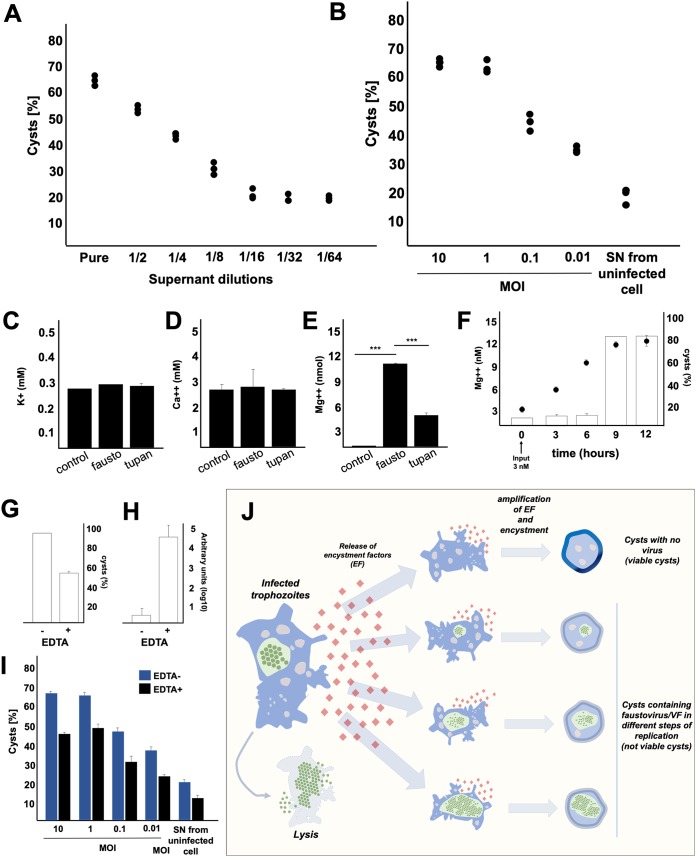FIG 10.
Investigation of encystment factors secreted by Vermamoeba vermiformis. (A) Induction of encystment (%) in V. vermiformis cells caused by the virus-free supernatant from a previous F. mariensis infection of a V. vermiformis culture (MOI of 10). Supernatant was diluted 2-fold from undiluted to 1/64. (B) Induction of encystment (%) of V. vermiformis cells caused by undiluted (pure) supernatant from a previous F. mariensis infection in V. vermiformis culture at different MOIs. (C to E) Quantification of the concentration of (C) K+, (D) Ca2+, and (E) Mg2+ in the supernatants of cells infected (MOI of 10, 10 hpi) with F. mariensis or Tupanvirus and in those of uninfected cells (control). The statistical significance was calculated using a two-tailed 2-way ANOVA test and a Tukey’s range test, using GraphPad Prism. ***, P < 0.001. (F) Evaluation of the potential of Mg2+ as an inductor of encystment in V. vermiformis. A total of 3 nmol of Mg2+ was added to a culture of 4 × 104 amoeba trophozoites, and the concentration of Mg2+ was measured, as well as the rate of cyst formation over time. (G and H) Evaluation of EDTA effect on (G) cyst formation and (H) viral genome replication during F. mariensis infection at an MOI of 10. (I) Evaluation of the inhibitory activity of 10 mM EDTA on the encystment process induced by supernatants of V. vermiformis infected by F. mariensis at different MOIs, 24 h postinoculation. For all graphs, error bars indicate SDs. These experiments were performed three times in triplicate. (J) Scheme summarizing the phenomenon described in this work. Once infected by F. mariensis, a V. vermiformis trophozoite can be lysed, as described for other amoebal giant viruses. However, during the first events of infection in a V. vermiformis population, encystment factors are released into the supernatant, which can induce the encystment of uninfected cells or even cause the encystment of infected trophozoites. As a result, we found cysts with no excystment ability during different stages of the replication cycle. The overall viral load in the supernatant is controlled by V. vermiformis trapping a substantial amount of viral progeny inside cysts.

